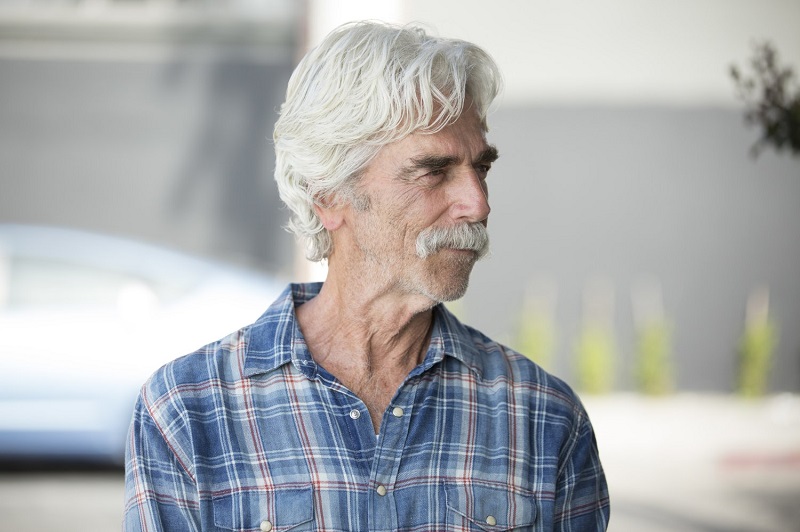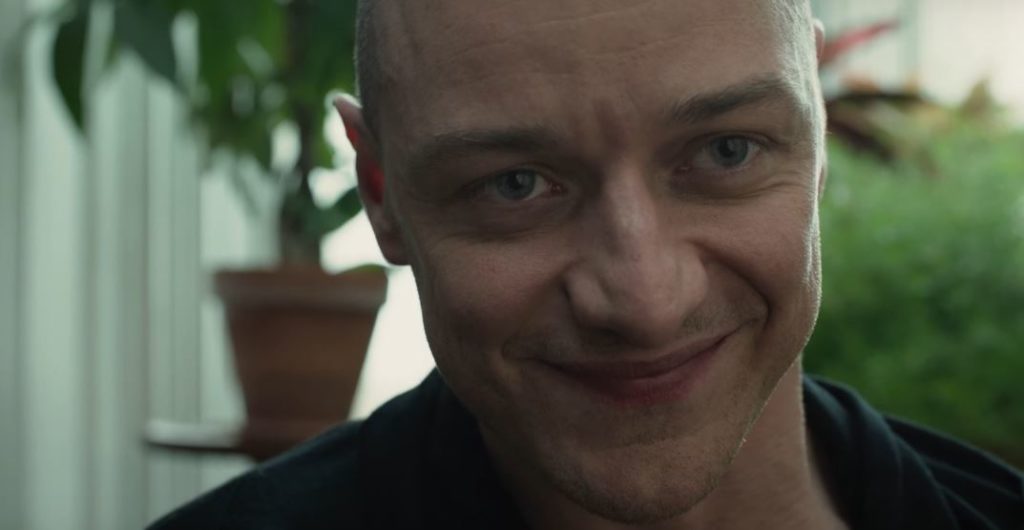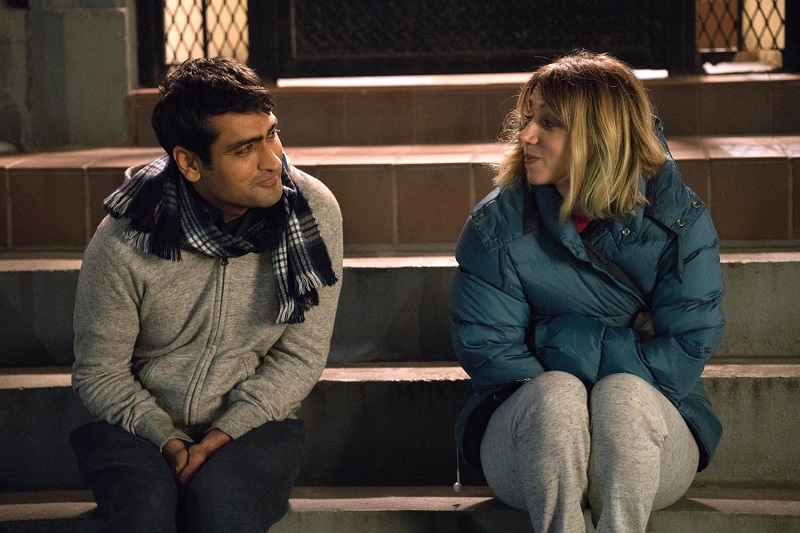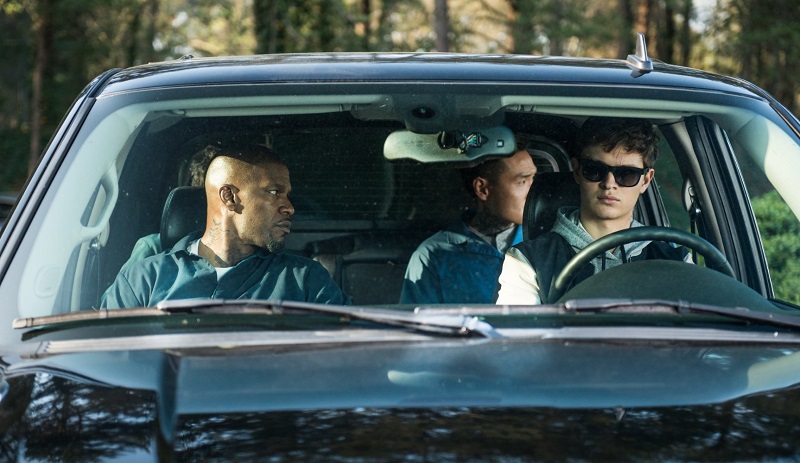We are right at the midpoint of the year 2017 and in terms of cinema, it has not been the best of years, nor has it been the worst of years. Still, when looking to narrow down our top 10 of the year thus far, there was much to choose from when seeking to anoint the top of the cinematic class.
Heck, we gave not one, but two movies a rare A+ grade in our reviews!
So, who makes our list? The first thing that becomes clear is that the superhero movie genre has grown up by leaps and bounds. There are a few members of that movie club on our list, a third film in a trilogy that can now officially be labeled a classic of three-picture series and an Iraq war film that only featured two characters we could see and one more that we could only hear. Intrigued, no?
Without further ado, here is our top 10 of 2017 (so far)!
10. The Wall
Gripping suspense, a simple story structure and execution, but The Wall does something extraordinary with it all. It gives the audience an enormous emotional and explosive payoff.
Aaron Taylor-Johnson and John Cena star as snipers sent into a remote area of Iraq during the closing days of that war. An oil pipeline crew and for-hire private security forces have been killed by a lone gunman and our two leads must take out the enemy and ensure the area is safe. Sounds like a straight-forward mission, doesn’t it? It is anything but.
After a you-can-barely-breathe beginning, Taylor-Johnson and Cena find themselves trapped by the shooter, with a tiny, crumbling wall the only refuge from a barrage of bullets. How they get out and if they even get out is explored in a pulse-pounding and feverishly intense manner by director Doug Liman. The Wall is one of those rare films where the audience believes it knows where the plot is going to go, and then, it firmly grabs you by the lapels and takes you careening down an entirely different rabbit hole of tension.
9. John Wick Chapter 2
World building is not something that is easily achieved. Just ask the filmmakers behind The Matrix. They took that beyond-brilliant first film and attempted to expand that world in the following two sequels and it fell flat on its face. Thankfully, that is not the case when it comes to the landscape of John Wick.
Keanu Reeves returns to the title role in John Wick: Chapter 2 and creator/writer Derek Kolstad and director Chad Stahelski blow out the world of hired assassins in a manner that is rich, grounded in the reality set up in the first film and welcoming in a way that the audience desires even more from this veil-removed universe that now has gone international. As is the case with any good sequel, the stakes are higher, the costs are deeper and yes, the scope is wider. John Wick: Chapter 2 elevates the material presented in Chapter 1 in a manner that also escalates the action, the cast (brilliant additions of Common, Ruby Rose and Laurence Fishburne) and unbelievably… the payoff. Bring on Chapter 3!
8. The Hero
Brett Haley co-wrote and directed The Hero and the film could not be more of a gift to actor Sam Elliott. The legendary thespian should get an Oscar nomination for his portrayal of a past-his-prime western movie star who is struggling to find meaning in life as he opens one of the final chapters of that book. He’s making a living as a voice-over actor, and his career-defining role of decades prior still keeps him relevant. But, he seeks more.
When he accepts a Lifetime Achievement Award, it forces him to come to grip with his past, present and take a good hard look at his future.
Elliott demonstrates a level of emotional prowess never exhibited prior on the big screen. It is a tour-de-force performance in a film that is also equally as enthralling as its lead’s turn. The Hero is moving, important and above all else, Haley’s work is profoundly perfect on so many levels.
7. Split
M. Night Shyamalan may have announced his return to form with 2016’s The Visit, but 2017’s Split was scream it from the rooftops revelation that one of our most gifted storytellers had once again pushed the envelope. And what’s even more incredible is that he did it by providing a thread that weaves its way back to one of his first cinematic achievements, Unbreakable.
James McAvoy gives a career-best performance as a soul who is battling with containing 26 different personalities, all living concurrently in his mind. We doubt Oscar will come calling for McAvoy, given that the film landed in January. But it is of that caliber of performance. Each personality is keenly defined by the actor in a way that is simply a work of art in every sense of the word.
When McAvoy’s character kidnaps a trio of teenage girls, it sets off a series of hauntingly electric events that will culminate in the most chilling of manners. There are movies that haunt you, and then there is the eeriness and searing psychological panache of Split.
6. Logan
Logan is the third stand-alone Wolverine movie and by the time the credits roll on this dark and powerful noir-inspired solo X-Men film, prepare to be recovering from a emotionally lethal punch to the gut and heart.
The story is set in the near future and finds our title character caring for an aging and ailing Professor X along a desolate part of the US-Mexican border. It is the focus of his life and all-consuming. Then, a young mutant enters his view and she could be his daughter. She has been built/bred/programmed as he is and the similarities (right down to their personalities) is uncanny. She is being hunted and if there’s one thing we know about Logan, it is that he won’t stand for that.
Our trio head out on the highways and suddenly this superhero movie is a riveting road trip film, complete with the character tropes that endear audiences to that subgenre. Much is revealed. Emotions are charged. Action ensues, repeatedly, and above all else, the world of the X-Men will never be the same again. What filmmaker James Mangold has done is astonishing. He (and Jackman, of course) has finally given us the Wolverine character that has been merely teased for the last decade and a half. It is the ultimate tribute to our favorite X-Men tortured soul. Logan is also a film that can be witnessed repeatedly and something different will permeate your senses each time.
5. Free Fire
It is incredible when a film can solely exist in four walls, essentially, and only over the course of three acts give the audience a double-barreled, bombastically buoyant and singly fiercely focused folly that is as enthralling as it is entertaining. Writer-director Ben Wheatley has achieved that, and even more truthfully, with his fiery Free Fire.
Brie Larson is Justine and she has brought two different groups together in a Boston warehouse for an arms deal. On one side there is the Irishman, Chris (Cillian Murphy), who is looking to secure an arsenal for his political brothers — the IRA — from weapons dealer Vernon (Sharlto Copley). They each bring a small entourage and after a simple disagreement sends the entire situation south, guns are drawn (and fired) and we spend the rest of the movie wondering who the hell is going to make it out of this bullet ridden landscape alive.
Wheatley, as many other writer-directors on this list have done as well, presents a sharply attuned and emotively elaborated landscape of characters, each with the complexity that finds personal intentions meeting egos battling ids. It is also a high stakes shoot-‘em-up actioner that all adds up to two hours of delightful delirium.
Every single gunshot is economically utilized, in that it is not a film featuring a soundtrack of gunshots that permeate throughout. Oh no, this is a precisely calculated culmination of gun fire that only rings out when it needs to and it suits the moving of the plot forward. Sure, weapons are drawn and tensions run high. But triggers are only pulled when it fills the dramatic need.
When it comes to Free Fire — the moments of magnificence are many.
4. Colossal
Anne Hathaway is a monster. Seriously… in Colossal, she is a monster who is trying to figure out how to inadvertently stop killing the masses thousands of miles away by her actions in her could-be-anywhere American hometown. After returning home from New York City, Hathaway’s Gloria settles into her old school ways of partying every night at the local bar with its owner, her old friend Oscar (Jason Sudeikis). For some reason, she is connected to a giant monster that destroys Seoul, South Korea every evening. She must figure out that common thread so that she can stop the mayhem and somehow find a way to a future that doesn’t involves destroying herself or thousands of innocents.
Writer-director Nacho Vigalondo has given us a world in Colossal that is as profound as it is perfunctory. So many live our lives without giving a thought that we fall into patterns and that sometimes those patterns can harm ourselves or others. It is a film that is utterly entertaining, but it will also make you think. There are messages about personal responsibility mixed in to the humor and character building (and in some ways destroying) that truly resonates.
Who here doesn’t feel they have an inner monster that if unleashed could wreak havoc? Through Hathaway, Sudeikis and Vigalondo’s collective storytelling skills, we see one veracious version of what that could look like. It is dark yes, but enlightening all the same.
3. Wonder Woman
Fate is a funny thing. As they say, timing is everything and that could not be truer than when looking at the long journey to the screen for Wonder Woman. She’s been around for 75 years, but yet Wonder Woman is the first time we’ve seen her on the big screen. Not too much pressure on all those involved to get it right, no?
That’s why it is absolutely fantastic that director Patty Jenkins and star Gal Gadot were both in the right place at the right time to accept their roles in what would prove to be destiny. Wonder Woman may have taken three-quarters of a century to become a big time Hollywood movie, but each second of its brilliance is worth every second of the wait.
The origins story still firmly exists with this first solo movie for the heroine. It is masterfully done, even with her existence already established previously by Wonder Woman’s appearance in Batman v Superman: Dawn of Justice. But it does so by taking us back to Diana as a little girl as we witness her become Wonder Woman. Her world is shaken when a World War I fighter pilot (Chris Pine) crash lands and in many ways brings the entire global battle to the doorstep of what once was an Amazon Warrior paradise.
When Wonder Woman swings into action in the No Man’s Zone scene, there wasn’t a dry eye in the house. That is a salute to the talent of Gadot and the astute storytelling skills of Jenkins. Wonder Woman is a heart-tugging journey as much as it is an action filled, thrilling experience.
In the end, all great works come down to story and what we have here is a case of a top notch tale, told by talents working at the highest end of their game, who have delivered on a 75-year-old promise that could not have come at a better time for girls and women, boys and men and society as a whole. It’s the movie we needed and for once, it is the one audiences received.
2. Get Out and The Big Sick (Tie)
Speaking of cultural movie moments, Get Out landed on screens earlier this year from the traditionally comedic mind of Jordan Peele. It tells a simple enough story, but it could not be more complex in its layered approach to putting up a mirror to current society and where we are with race relations in 2017.
Chris (Daniel Kaluuya) is being brought home to meet his girlfriend Rose’s (Allison Williams) parents for the first time. Before they leave, he makes sure of one thing — they know that this white girl is bringing home a black man. She stresses that it is not a big deal and that her father “would have voted for Obama a third time if he could have.” Then, they get to her hometown and everything is just a wee bit off. It all goes downhill from there, but in the most subtlety real ways. Peele has a gift with how his script lays on the eeriness of the situation without ever completely hitting us over the head with it. That is until we are up to our elbows in a revolutionary revoltingly racist quicksand that has the audience squirming while simultaneously pulling for Chris to get the hell out of there. But, just like quicksand, the more he struggles, the worse his situation becomes.
Peele wraps his story up in the most unlikely of bows and it is beyond satisfying. Get Out is also a film that needs to be witnessed more than once. It is because of those Peele-laden layers placed throughout that need to be peeled away methodically and dissected in a manner that befits this brilliance.
The Big Sick is Emily V. Gordon and Kumail Nanjiani’s love story. It is the basis for the film that has single-handedly revived the beloved movie genre of the romantic comedy. It does it in the most astounding of ways in that one of its leads is in a coma for an act-and-a-half.
Zoe Kazan is delightful as Emily, who meets Kumail as he is doing his stand-up act in Chicago. Their attraction is immediate. But, things are complicated. Nanjiani is from a Pakistani family and as his parents see things in their culture, one does not marry for love. It is arranged. When that becomes painfully clear, the duo split. Then, Emily has a health emergency and Kumail gets a call from a friend, desperate for help. He calls their parents (the supremely awesome Holly Hunter and Ray Romano) and they come to Chicago. Soon, they wonder why this guy is still hanging around the hospital. It is fate and he feels that he messed with it.
Over the rest of the film charm exudes, love wins (but it is not an easy victory by any means) and humor permeates. Director Michael Showalter has a firm grasp on the subject and navigates some treacherous waters in The Big Sick that result in audiences heading home holding their love ones a little tighter and with a little more urgency knowing how fleeting life and love can be.
1. Baby Driver and War for the Planet of the Apes (Tie)
Baby Driver and War for the Planet of the Apes tie for first place because there is no way to choose between the two films. Each are perfect in their own way and both received A+ ratings from this writer in our review. That is amazing, given that it is a grade that is rarely given by this critic.
Both Baby Driver and War for the Planet of the Apes are the unusual summer movies that triumph beyond the traditional blockbuster fare for the warmer months. But they each do it in unique ways that could not be more different than the other.
Edgar Wright wrote and directed Baby Driver and it succeeds because it takes a genre of film that is tried and true, albeit a bit tired — the heist film — and it turns it completely on its head. His use of music synchronized with the action, dialogue and sound effects is revolutionary.
Baby (Ansel Elgort) is a getaway driver for heist crews led by Kevin Spacey’s Doc. There are three robberies in the film, and each gets progressively worse. The tension rises. The stakes for Baby also become more real as he finds romance with Lily James’ diner waitress. It all comes to a boil during the third heist (and the third act) as Wright illustrates his command of his movie magic touch by giving us a methodically thought out film that pulsates with every second of screen time and delivers on all of its promises in a way that pushes the medium to new heights.
War for the Planet of the Apes achieves its brilliance by a completely different means. Matt Reeves’ latest Planet of the Apes movie is the final chapter of a three film trilogy that serves as a prequel to all those classic Apes movie of yesteryear. By the closing credits, it has firmly put itself in the running to be considered one of the most astounding trilogies ever undertaken by Hollywood. Yes, it is that good.
Caesar (Andy Serkis, who deserves an Oscar nod for his mo-cap performance) seeks to live his life, raise his family and expand his otherwise peaceful community of apes. Mankind has other ideas. They keep showing that they are the savages, not the simians. This time out, it is Woody Harrelson’s Colonel who wants to wipe the apes off the map and ensure the world remains a safe haven for humans.
Even though we know how this final chapter of this prequel trilogy plays out (the movies are called Planet of the Apes after all), Reeves weaves of web of connectivity to the apes that has us rooting against our own species. Stronger still, the filmmaker has the audience firmly in the grasp of what essentially is seeking the extinction of human kind. After all, the apes not only win this war as we know from history, but do so in a way that has audiences cheering, shedding a tear or two and providing a direct link from what we witness on the screen to the deepest ends of our emotional spectrum. It is a spectacular achievement on so many levels.












